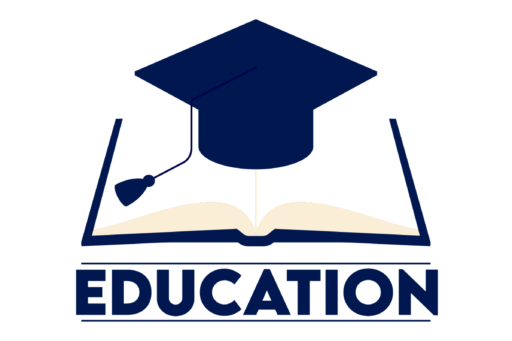Educational Systems Around the World Education is a fundamental building block of societies across the globe, shaping individual lives and driving social and economic progress. While the core purpose of education remains consistent—to impart knowledge, skills, and values—the systems through which education is delivered can vary dramatically from one country to another. This blog explores various educational systems around the world, highlighting their unique characteristics, challenges, and contributions to society.
Understanding Educational Systems
An educational system refers to the structure and organization of education within a specific country or region. It encompasses various components, including schools, colleges, universities, curricula, teaching methods, and assessment practices. The effectiveness of an educational system is often measured by its ability to produce knowledgeable, skilled, and socially responsible citizens.
Key Components of Educational Systems
- Curriculum: The curriculum outlines what students are expected to learn at different educational levels. It includes subjects, teaching materials, and learning outcomes.
- Teaching Methods: Various pedagogical approaches are employed, including traditional lecture-based teaching, interactive learning, and project-based methodologies.
- Assessment: Evaluating student performance through examinations, standardized tests, and continuous assessment.
- Governance: Educational systems are typically governed by national or regional authorities that set policies, standards, and funding mechanisms.
Major Types of Educational Systems
Educational systems can be categorized based on their governance structures, funding sources, and educational philosophies. Below are some common types:
1. Public Education Systems
In many countries, education is primarily funded and administered by the government. Public education systems aim to provide free or low-cost education to all citizens.
- Example: In the United States, public schools are funded through local, state, and federal taxes. They follow a standardized curriculum set by state education departments.
2. Private Education Systems
Private schools operate independently of government funding and often charge tuition fees. These institutions may offer specialized curricula, religious education, or alternative pedagogical approaches.
- Example: In many countries, including the United Kingdom and the United States, private schools often have more flexibility in their curricula and teaching methods compared to public schools.
3. International Education Systems
International schools cater to expatriates and local families seeking an internationally recognized curriculum. These schools often follow the International Baccalaureate (IB) program or curricula from specific countries.
- Example: International schools in countries like Singapore, Japan, and Germany often offer a mix of local and global educational standards.
4. Alternative Education Systems
Alternative education systems prioritize different philosophies of learning, such as Montessori, Waldorf, or homeschooling. These systems often emphasize individualized learning and hands-on experiences.
- Example: The Montessori method encourages child-led learning, where students choose their activities and work at their own pace.

Educational Systems in Different Regions
Let’s take a closer look at how education is structured in various regions around the world:
1. North America
In North America, particularly in the United States and Canada, the educational system is decentralized, with significant variations among states and provinces. Education typically follows the K-12 model, where students attend kindergarten through 12th grade before pursuing higher education.
- Higher Education: The U.S. is home to numerous prestigious universities and colleges, offering a diverse range of programs. Admission to higher education institutions often requires standardized test scores (e.g., SAT, ACT) and extracurricular involvement.
2. Europe
European countries have diverse educational systems influenced by cultural, historical, and political factors. Many countries offer free or subsidized education up to the tertiary level.
- Example: In Finland, the education system is known for its emphasis on equity and student well-being. Finnish students enjoy shorter school days, less homework, and no standardized testing until the end of high school.
3. Asia
Asia encompasses a wide range of educational systems, from highly competitive environments to those emphasizing holistic development.
- Example: In Japan, the education system places a strong emphasis on discipline, respect, and teamwork. Students typically attend school from elementary through high school and often engage in after-school programs (juku) for additional learning.
4. Africa
Educational systems in Africa face significant challenges, including limited resources, political instability, and socio-economic disparities. However, there are ongoing efforts to improve access to quality education.
- Example: In countries like Kenya, initiatives such as the Free Primary Education policy have significantly increased enrollment rates, though challenges remain in ensuring quality education.
5. Latin America
Many Latin American countries are working to improve their educational systems, focusing on increasing access and reducing inequalities.
- Example: Brazil has made strides in improving educational access through programs like Bolsa Família, which provides financial assistance to families in exchange for ensuring their children attend school.
Challenges Facing Educational Systems
While educational systems worldwide have made significant progress, they still face numerous challenges:
1. Inequality in Access
Many regions struggle with disparities in access to education based on socio-economic status, gender, and geographic location. Rural areas often lack adequate educational facilities, while marginalized communities may face additional barriers.
2. Quality of Education
Ensuring quality education is a common challenge. Many educational institutions struggle with outdated curricula, insufficient resources, and a lack of trained teachers.
3. Cultural and Language Barriers
In multilingual societies, language can be a barrier to education. Students from minority language backgrounds may struggle to learn in a language they are not proficient in, affecting their academic performance.
4. Mental Health Issues
The pressures of academic performance can lead to mental health challenges among students. Schools need to prioritize mental health support to create a nurturing environment.
5. Technological Integration
While technology can enhance education, the digital divide remains a significant issue. Not all students have access to the necessary tools or internet connectivity, which can hinder their learning experience.
The Future of Education
As we look to the future, several trends are shaping educational systems worldwide:
1. Emphasis on Technology
The integration of technology in education is transforming how students learn. Online learning platforms, educational apps, and virtual classrooms are becoming increasingly prevalent.
2. Focus on Skills Development
There is a growing emphasis on equipping students with practical skills, such as critical thinking, creativity, and collaboration, which are essential for success in the modern workforce.
3. Global Citizenship Education
Educational systems are increasingly incorporating global citizenship education, which teaches students about their roles and responsibilities in a globalized world.
4. Lifelong Learning
The concept of lifelong learning is gaining traction, with more emphasis on continuous education and professional development throughout one’s life.
5. Inclusive Education
Efforts are being made to create more inclusive educational environments that cater to the diverse needs of all students, including those with disabilities and special needs.

Conclusion
Educational systems around the world are as diverse as the cultures and societies they serve. While challenges remain, the ongoing efforts to improve access, quality, and relevance of education are crucial for fostering personal growth and societal progress. As we navigate an increasingly complex and interconnected world, investing in education will be key to shaping a brighter future for all. By understanding and learning from various educational systems, we can work together to create more effective and inclusive learning environments that empower individuals and communities alike.

